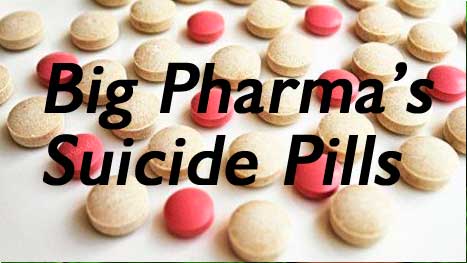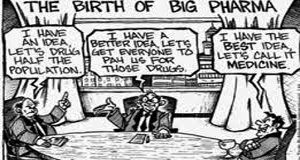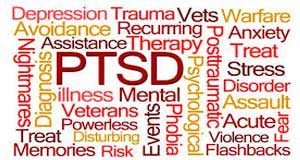Dr. Gary G. Kohls — Global Research —
 55 years ago (July 2, 1961) an American literary icon, Ernest Hemingway, committed suicide at his beloved vacation retreat in Ketchum, Idaho. He had just flown to Ketchum after being discharged from a psychiatric ward at the Mayo Clinic in Rochester, MN where he had received a series of electroconvulsive “treatments” (ECT) for a life-long depression that had started after he had experienced the horrors of World War I. In the “War To End All Wars” he had been a non-combatant ambulance driver and stretcher-bearer.
55 years ago (July 2, 1961) an American literary icon, Ernest Hemingway, committed suicide at his beloved vacation retreat in Ketchum, Idaho. He had just flown to Ketchum after being discharged from a psychiatric ward at the Mayo Clinic in Rochester, MN where he had received a series of electroconvulsive “treatments” (ECT) for a life-long depression that had started after he had experienced the horrors of World War I. In the “War To End All Wars” he had been a non-combatant ambulance driver and stretcher-bearer.
One of Hemingway’s wartime duties was to retrieve the mutilated bodies of living and dead humans and the body parts of the dead ones from the Italian sector of the WWI battle zone. In more modern times his MOS (military occupational specialty) might have been called Grave’s Registration, a job that – in the Vietnam War – had one of the highest incidences of posttraumatic stress disorder (PTSD) that arose in that war’s aftermath.
Hemingway, just like many of the combat-induced PTSD victims of every war, was likely haunted for the rest of his life by the horrific images of the wounded and dead, so there was no question that he had what was later to be understood as combat-induced PTSD with depression, panic attacks, nightmares, auditory and/or visual hallucinations and insomnia.
Unfortunately for Papa, the psychiatrists at the Mayo Clinic were unaware of the reality of the PTSD phenomenon. They mistakenly thought that he had a mental illness (depression) of unknown etiology. (The diagnosis of PTSD wasn’t validated by the American Psychiatric Association as a Diagnostic and Statistical Manual (DSM) diagnosis until 1980.)
Hemingway, a legendary chronic alcoholic who consumed large volumes of hard liquor daily, had also been wounded by shrapnel in WWI so he probably also had physical pain issues. Therefore, like many other soldier-victims of combat-induced PTSD he used alcohol to self-medicate his physical pain as well as his psychic pain, anxiety, insomnia, nightmares, failed marriages and the financial stresses related to the alimony payments to his ex-wives.
Following his Mayo Clinic misadventure, Hemingway rapidly came to understand that his latest ECT “treatments” had erased his memory and creativity, and, because those realities were essential for him to continue his writing career, thus feeling that he no longer had a reason for living and ended his life. There is no record of what psychiatric drugs he had been prescribed over the years, but ECT is typically only attempted after all drug options had failed.
The Parallel Paths of Artistic Geniuses Like Hemingway and Williams (and Michael Jackson and Prince)
53 years (July 1, 2014) after Hemingway’s self-inflicted death, another American icon, actor and comedian Robin Williams, entered the Hazelden psychiatric facility and addiction treatment center – also in my home state of Minnesota. He was treated with an cocktail of drugs for a month and, shortly after his discharge, committed suicide by hanging (August 11, 2014). The cocktail of newly prescribed brain-altering drugs surely was a major factor in his becoming increasingly depressed, losing appetite, losing weight and withdrawing from his loved ones.

His discharge medications, which included the antidepressant drug Remeron, the anti-psychotic drug Seroquel (probably prescribed off-label for his insomnia) and an unknown anti-Parkinsonian drug caused him to be somnolent, despondent, despairing and increasingly depressed.
Remeron, it should be emphasized, is well-known to cause suicidal thinking (and attempts) and carries the Food and Drug Administration’s “Black box” warning for suicidality. After he returned home, he was said to have slept in his darkened bedroom, up to 20 hours a day, in a probably drug-induced stupor.
Remeron, it is helpful to remind readers, was one of the two psych meds (the other was the anti-psychotic drug Haldol) that the infamous Andrea Yates was taking before she irrationally drowned her five children – including her 6 month-old baby Mary – in the family bathtub. The devoutly religious Texas mother was convicted of first degree murder and sentenced to life imprisonment but – at re-trial – had her conviction changed to “not guilty by reason of insanity” (rather than “not guilty by reason of the intoxicating, insanity-inducing and homicidal effects of psychiatric medications!”). She is now spending the rest of her life in a psychiatric facility, no longer a threat to children.
Robin Williams was said to have been diagnosed with Parkinson’s Disease while at Hazelden. The symptoms of Parkinson’s Disease are well known to be caused by antipsychotic drugs. Children who have been given anti-psychotic drugs (most commonly foster care children) are now coming down with Parkinson’s Disease, an illness totally unheard of prior to the formation of the subspecialty of Pediatric Psychiatry.
The Secrets of NIMH (and Hazelden)
30 years ago or so a cartoon movie was released about lab rats that were trying to escape extermination by the National Institute of Mental Health. The movie was titled “The Secret of NIMH”. I tried to watch it a few years ago and was disappointed to discover that it really didn’t expose any of the real secrets of NIMH, its American Psychiatric Association foundations or the psychopharmaceutical industry’s unholy alliance with NIMH. I understand that a remake of the film is planned. I hope some of the real secrets will be revealed in the new film.
Robin Williams left no suicide note, and so far Hazelden is mum on what happened behind closed doors during that fateful – and failed – month-long stay.
“What Brain-Altering Drugs was Williams or Michael Jackson or Prince On?”
Williams’ legendary cocaine and amphetamine use are certainly factors to consider as contributing causes for his suicide, for such drugs are notoriously toxic to mitochondria and brain cells. What is also deserving of consideration is the fact that when patients abruptly quit taking an antipsychotic drug, withdrawal symptoms can occur – even if the drug was first prescribed for non-psychotic issues like insomnia. Those withdrawal symptoms can include irrational thinking, loss of impulse control, psychoses, hallucinations, insomnia and mania, any of which can lead a physician to falsely diagnose schizophrenia or so-called bipolar disorder or any number of mental disorders “of unknown cause”.

Some of Williams’ closest friends are logically wondering about what was the effect of the newly prescribed drugs that may have motivated Williams to so illogically kill himself. Hollywood journalists swarmed all over the tragic event two years ago, but characteristically avoided even speculating about the possibility of psychiatric drug-induced suicide, the most logical explanation for the series of events, especially for any thinking person who knows anything about the connections between psychiatric prescription drugs and suidicality, homicidality, aggression, violence, dementia, and irrational thinking and actions (whether while taking the drugs or withdrawing from them).
Such informed people have already asked themselves the question: “I wonder what psych drugs Robin (or Hemingway or Michael Jackson or Prince) was taking?” Tragically, the media has been totally unhelpful in discussing that important question or in offering any answers to the question. Iatrogenic (doctor-caused or prescription drug-induced) causes of morbidity and mortality are apparently not to be discussed in polite company.
It is important to point out that a bottle of Seroquel with 8 pills missing was found in Williams’ bedroom and drug toxicity testing revealed Remeron in Williams’ bloodstream at autopsy. The coroner emphasized that the dose of the legally-prescribed drug was at “therapeutic levels”, which is, of course, totally unhelpful information, given the fact that the undesired effects of a drug have no correlation to dosage.
The Taboo Reality: Psych Drugs Can Cause Suicidality
There have been millions of words written about how much everybody was shocked by Williams’ suicide. There have been thousands of flowers placed at any number of temporary shrines “honoring” his legacy. There have been thousands of comments on the internet from amateur arm-chair psychologists spouting obsolete clichés about suicide, mental illness, drug abuse, alcoholism, cocaine addiction, and how wonderful psychoactive prescription drugs have been.
 And there have been hundreds of dis-informational essays and website commentaries written by professional arm-chair psychiatrists who have financial or career conflicts of interest with Big Pharma, Big Psychiatry, Big Medicine and the rehab industries. Most of those commentaries distract readers from making the connections between suicidality and psych drugs. Some of the comments I have read have preemptively tried to discredit those who are publicly making those connections.
And there have been hundreds of dis-informational essays and website commentaries written by professional arm-chair psychiatrists who have financial or career conflicts of interest with Big Pharma, Big Psychiatry, Big Medicine and the rehab industries. Most of those commentaries distract readers from making the connections between suicidality and psych drugs. Some of the comments I have read have preemptively tried to discredit those who are publicly making those connections.
Whenever unexpected suicides or accidental drug overdose deaths occur among heavily drugged-up military veterans, active duty soldiers, Hollywood celebrities or other groups of individuals, I search the media – usually in vain – for information that identifies the drugs that are usually involved in such cases. But revealing the drug names, dosages, length of usage or who prescribed them seems to be a taboo subject. One has to read between the lines or wait until the information gets revealed at www.ssristories.org (a Big Pharma whistle-blowing website that should be mandatory reading for everybody who prescribes or consumes psychiatric drugs).
Patient confidentiality is usually the reason given for the cover-ups – and why important potentially teachable moments about these iatrogenic (drug-induced or vaccine-induced) tragedies are averted.
Big Pharma, the AMA, the APA, the AAP, the AAFP, the CDC, the FDA, the NIH, the NIMH, Wall Street and most of the patient or disease advocacy groups that sponsor the annual fund-raising and very futile “searches for the cure” all understand that the hidden epidemic of iatrogenic illnesses must be de-emphasized. And, simultaneously, the altruistic whistle-blowers among us will be black-listed, denigrated and labeled as nuisance conspiracy theorists.
The corporate entities mentioned above also know how useful it is if patients (rather than the system) are blamed for causing their own health problems. Typical examples include: “you eat too much”, “you don’t exercise enough”, “you smoke too much”, “you don’t eat right”, “your family history is bad”, “you don’t take your meds correctly”, “you don’t come in for your screening tests or routine exams often enough”, “you don’t get all the vaccinations like you are told to do”, etc).
Highly unlikely “genetic” causes are energetically promoted as preferable root causes of totally preventable iatrogenic illnesses (because inherited disorders are not preventable and are also untreatable). This reality ensures that researchers can annually demand billions of dollars for research while at the same time short-changing and discrediting simple, cheap, do-it-yourself prevention that doesn’t need a doctor.
The confidence of the American public in Big Pharma’s drug and vaccine promotions must not be disturbed. Wall Street’s rigged stock market does not permit the publication of any information that could destroy investor confidence in the pharmaceutical or vaccine corporation’s highly profitable products, even if the science behind the drugs and vaccines is bogus and the unaffordable products are dangerous.
The beauty of an unbiased public inquest, which I advocated for in this column two years ago, should have been done in the case of Robin Williams and all the school shooters, would be the subpoena power of a grand jury to open up the previously secretive medical records and force testimony from Williams’ treatment team. The public could finally hear information that could make comprehensible the mysterious death of yet another high profile suicide victim and start the process of actually positively America’s suicide and violence epidemics.
An inquest would likely reveal that Robin Williams did not have a “mental illness of unknown cause” or “bipolar disorder of unknown cause” or “depression of unknown cause” or “suicidality of unknown cause”. An inquest would obtain testimony from feared whistle-blower experts in the fields of medicine, psychiatry and psychopharmaceuticals such as Peter Breggin, MD, Joseph Glenmullen, MD, Grace Jackson, MD, David Healey, MD, Russell Blaylock, MD, Fred Baughmann, MD and other well-informed medical specialists who don’t own stock in Big Pharma corporations and who know very well how dangerous their drugs can be.
Robin Williams did not have a Mental Illness of Unknown Etiology
Just knowing a little about the life and times of Robin Williams and others on the long list of celebrity victims of psychiatric drugs (like Michael Jackson and Prince both of whom “died too soon”) would easily disprove most of the unscientific theories about their deaths that have widely published online.
Why did many of us psych drug sceptics and psychiatric survivors want an inquest in Robin Williams’ suicide? We wanted to know the names of the ingredients in the cocktail of drugs that had been tried on him (and the dosages and length of time they were taken). We wanted to know what side effects he had from the drugs and what his responses were. We wanted to know what was the reasoning behind the decision to prescribe unproven combinations of powerful drugs on someone whose brain was already compromised by the past use of known brain-damaging drugs.
And we wanted to know, for the sake of past and future victims of these neurotoxic substances, if the prescribing practitioners informed Williams about the dangers of those treatments, particularly the black box suicide warnings for Remeron.
Stress-induced and Drug-induced Mental Ill Health Doesn’t Mean One is Mentally Ill
Robin Williams gained fame and fortune as a comic actor, starting with what was to become his trade mark manic acting style (stimulant drug-induced mania?) on “Mork and Mindy”. As have many other famous persons that attained sudden fame and fortune, Williams spent his millions lavishly and – in retrospect – often foolishly. After his third marriage he found that he could no longer afford his Hollywood lifestyle.
But long before his two divorces and the serious financial difficulties caused him to decompensate and again fall off the sobriety wagon, Robin Williams had lived in the fast lane, working long exhausting days and weeks and partying long exhausting nights with the help of stimulant drugs like the dependency-inducing drug cocaine (that overcomes sleepiness and fatigue) and artificial sleep-inducing tranquilizers whose mechanism of action resembles long-acting alcohol. Sedative drugs artificially counter the drug-induced mania and drug-induced insomnia that predictably results from psycho-stimulants like cocaine, nicotine, caffeine, Ritalin, Strattera, Prozac, Paxil, Zoloft, Celexa, Wellbutrin, Provigil, amphetamines, etc, etc).
Williams had acknowledged that he was addicted to both cocaine and alcohol when his famous comedian buddy John Belushi died of an accidental drug overdose shortly after they had snorted cocaine together (March 4, 1962). Shortly after Belushi’s overdose death, Williams quit both drugs cold turkey, and he remained sober and cocaine-free for the next 20 years. There is no public information about his use of addictive prescription drugs, but it is well-known that many Hollywood personalities like him have close relationships with both prescription-writing physicians and illicit drug pushers, many of whom make house calls.
However, Williams relapsed in 2006 and started abusing drugs and alcohol again, eventually being admitted to a Hazelden drug rehab facility in Oregon. After “taking the cure” he continued his exhausting career making movies, doing comedy tours and engaging in personal appearances in order to “pay the bills and support my family”.
After two expensive divorces, huge indebtedness and an impending bankruptcy, Williams was forced, in September of 2013, to sell both his $35,000,000 home and his even more expensive ranch in Napa Valley. He moved into a more modest, more affordable home in the San Francisco area, where he lived until his death.
But despite solving his near-bankruptcy situation (which would make any sane person temporarily depressed), Williams continued having a hard time paying the bills and making the alimony payments, so he was forced to go back to making movies (which he despised doing because of the rigorous schedule and being away from his family for extended periods of time). And he hated the fact that he was being financially forced to sign a contract to do a “Mrs. Doubtfire” sequel later in 2014.
For regular income, he took a job doing a TV comedy series called “The Crazy Ones”, but the pressures of working so hard got him drinking again, even using alcohol on the set, which he had never done before. He was making $165,000 per episode and was counting on continuing the series beyond the first season in order to have a steady income.
So when CBS cancelled the show in May 2014, humiliation, sadness, anxiety and insomnia naturally set in, and he decided to go for professional help at the Minnesota Hazelden addiction facility, spending the month of July 2014 as an patient there. The public deserves to know what really happened inside that facility.
We certainly deserve to know the full story. There are many painful lessons that can be learned. Those who think that we can’t handle the truth are wrong.
The psychiatric drug-taking public deserves to know what were the offending drugs that contributed to his pain, anguish, sadness, nervousness, insomnia, sleep deprivation, hopelessness and the seemingly irrational decision to kill himself.
And the family, friends and fans of Robin Williams certainly deserve to know the essential facts of the case which, if not accomplished, will otherwise just result in a blind continuation of America’s “mysterious” iatrogenic suicide, violence and dementia epidemics. Ignorance of the well-hidden truths will just allow the continuation of Big Pharma’s ill-gotten gains and the fact that it has been deceiving the medical profession for so long – and destroying the memory, creativity, brains and lives of millions of our patients simultaneously.
For more information on the above very serious issues, check out these websites:www.ssristories.com, www.madinamerica.com,www.mindfreedom.org.“http://rxisk.org/www.mindfreedom.org, www.breggin.com, www.cchrint.org,www.drugawareness.org, www.psychrights.org, www.quitpaxil.org, www.endofshock.com.
Appendix A
Drug-Induced Mental and/or Neurological Ill Health
It needs to be mentioned that all the so-called “atypical” antipsychotic drugs (like Seroquel, Risperdal, Abilify, Geodon, Zyprexa, Clozaril, Fanapt, Invega, Saphris, etc) can also cause diabetes, obesity, hyperlipidemia, liver cell necrosis, and the metabolic syndrome, as well as neurologic movement disorders that mimic (or actually cause) Parkinson’s and Lewy Body disorder (the latter diagnosis of which Williams’ autopsy findings revealed). But it is important to point out that, contrary to what Robin Williams widow has recently proposed, Lewy Bodies in the brain DO NOT cause suicidality.
Rather, the brain lesions of neuro-degenerative disorders such as Parkinson’s (and probably also the equally microscopic Lewy Body lesions that can’t be diagnosed prior to autopsy) are commonly caused by neurotoxins such as petrochemical solvents (such as toluene, trichlorethylene and benzene), poisons (such as carbon monoxide and cyanide), insecticides (such as Rotenone), herbicides (such as Paraquat), fungicides (such as Maneb), metals (such as copper, mercury, manganese and lead), and brain-altering psychiatric drugs that are known to cause drug-induced dementia. (See the seminal work of practicing psychiatrist Grace E. Jackson, titled “Drug-induced Dementia: A Perfect Crime” for much more.)
Both illicit and prescription psychoactive drugs can indeed cause the death of brain cells, at least partly because of those synthetic drug’s mitochondrial toxicity traits. The carcasses of the dead and dying cells can be identified as abnormal microscopic deposits of nerve tissue such as can be found in the brain biopsies of patients who died with Parkinson’s Disease, Dementia with Lewy Bodies or drug-induced dementia (which is commonly mis-diagnosed as “Alzheimer’s disease of unknown cause”).
Incidentally, drug-induced Parkinsonism can be caused by the neurotoxic effects of the following groups of commonly prescribed drugs: 1) “typical” antipsychotic drugs (such as Thorazine and Haldol), 2) “atypical” antipsychotics (such as Seroquel and Risperidal), 3) pro-motility gastrointestinal drugs (such as Reglan), 4) calcium channel blockers (such as Norvasc and Cardizem), and 5) antiepileptic drugs (such as Valproate).
Appendix B
Shouldn’t There be Penalties for Pushers of Legal Brain-altering Substances?
There are penalties for bartenders who serve underage drinkers who go on to have auto accidents while under the influence. There are penalties for street corner drug pushers who supply their junkies with dangerous illicit drugs, and there are penalties for the drug lords who are at the top of the drug supply chain.
But shouldn’t there also be penalties for legal drug pushers who are supplying medications to their addiction-prone clients without first obtaining from them fully informed consent concerning the dangers of the drugs? Shouldn’t there be penalties for legal drug pushers who are prescribing dangerous brain-altering psychiatric drugs in combinations that have never even been tested for safety, even in the animal labs?
The very profitable industries of Big Pharma, Big Psychiatry, Big Medicine and drug rehabilitation are all very interested in de-emphasizing all unwelcome truths about the lethality of their products and thus they successfully prevent them from being aired in the mainstream media.
Thus there is a rapid disappearance of interest in the celebrity suicides or lethal drug overdoses by the time the delayed coroner’s report reveals what drugs were in the victim’s blood and gastric contents. (Note that many coroners are not aware that many psych drugs are detectable in brain tissue long after the time that they have disappeared from the stomach and bloodstream; therefore many coroners don’t bother to test for drugs in brain tissue samples).
If blood tests are negative for drugs, it is often erroneously assumed by the uninformed public (and even many medical professionals) that drugs aren’t a factor in the aberrant behavior or death of vulnerable drug-taking humans. Drug withdrawal commonly causes patients to become irrational, violent or suicidal – realities that can occur at any time, even after the drug has long disappeared from the blood.
The lessons are numerous and the teachers are available, but they are censored-out of our corporate-dominated media system. Those important lessons are there for anybody to learn, but we must first overcome the powers-that-be that know they won’t profit from our enlightenment.
Spread the word. Robin Williams, Ernest Hemingway, Michael Jackson and Prince would want us to do that.
Dr. Kohls is a retired physician who practiced holistic, non-drug, mental health care for the last decade of his family practice career. He is a past member of MindFreedom International, the International Center for the Study of Psychiatry and Psychology and the International Society for Traumatic Stress Studies. He now writes a weekly column for the Reader Weekly, an alternative newsweekly published in Duluth, Minnesota, USA. Many of Dr Kohls’ columns are archived at http://duluthreader.com/articles/categories/200_Duty_to_Warn, http://www.globalresearch.ca/authors?query=Gary+Kohls+articles&by=&p=&page_id= or at https://www.transcend.org/tms/search/?q=gary+kohls+articles
 TheBulletin.ca Journal of Downtown Toronto
TheBulletin.ca Journal of Downtown Toronto



